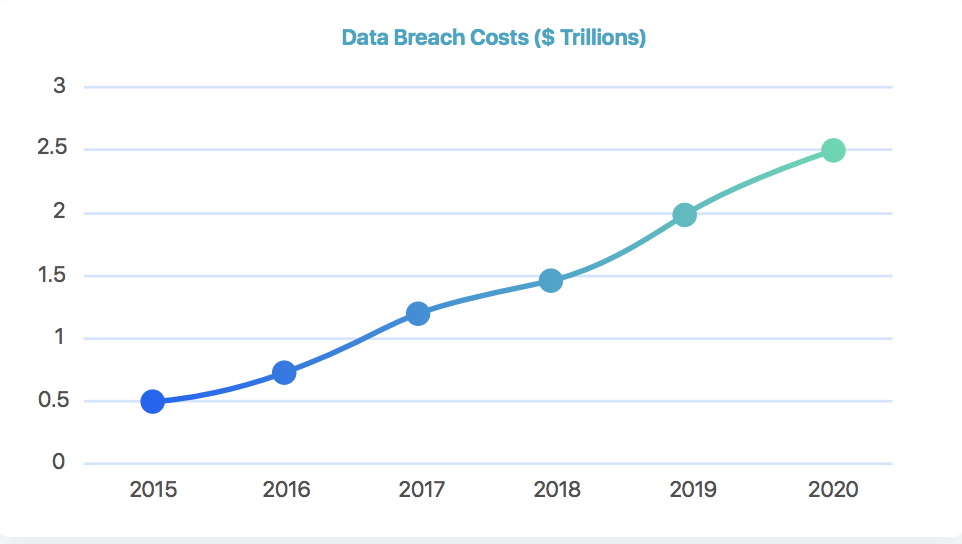Humble beginnings
There?s plenty of buzz around the web 3.0 and the sweeping changes it will bring to the industry, but few people actually know why it spawned and what it will bring. To understand this, it?s necessary to travel back in time and examine it predecessors, Web 1.0 & 2.0.
Just like the Middle Ages, the Web 1.0 wasn?t given its name until it bit the dust. The ?World Wide Web? as it was known, was just a set of static websites with a load of information and no interactive content. Connecting meant dialing up through rickety modems and blocking anyone in the house from using the phone. It was the web of AOL chat rooms and MSN messenger, of AltaVista and Ask Jeeves. It was maddeningly slow. Streaming videos and music? Forget it. Downloading a song would take at least a day.
And then there was 2.0
The memory of bleepy modems and boring interfaces has largely floated away. Faster internet speeds paved the way for interactive content, the web wasn?t about observing anymore, it was about participating. The global sharing of information spawned the age of ?Social Media?. Youtube, Wikipedia, Flickr and Facebook gave voices to the voiceless and a means for like-minded communities to thrive.
Publishing this blog post will take me a hassle-free 30 seconds, an immeasurable improvement from when it took a concerted effort between designers, developers and administrators just to make a simple website edit. We could call this the Read-Write-Publish? era ? where the spread of information is as simple as those three words. So it begs the question, the web 2.0 is great, what went wrong?
Information is money
The UN estimated internet users increased from 738 million to 3.2 billion from 2000?2015. That?s an unfathomable amount of data floating around, and as big digital corporations realized, personal information is an enormously valuable asset. So began the mass stockpiling of data in centralized servers, with Amazon, Facebook and Twitter the biggest custodians. People sacrificed security for the convenience of these services; whether they knew it or not, their identities, browsing habits, searches and online shopping information was sold to the highest bidder.
The 3.0 revolution
By this stage, Web 2.0 exponents were already dreaming up a successor. The next web, they envisaged, would take nostalgic turn to the vision of the web 1.0: more ?human? and more privacy. Rather than concentrating the power (and data) in the hands of huge behemoths with questionable motives, it would be returned the rightful owners.
The vision of a fairer and more transparent web dates back to around 2006, but the tools and technologies weren?t available for it to materialize. Bitcoin was still three years off, bringing with it the notion of a distributed ledger, or blockchain, for peer-to-peer digital storage. Decentralization was the idea; blockchain was the means. Now we have what is described as human-centered internet.
The pro-privacy, anti-monopoly web
While the Web 2.0 democratized many power structures and created new opportunities, the economic engine is largely privatized and monopolized. Facebook, Uber and AirBnB have created private networks for public infrastructure which they dominate. The Web 3.0 is the antithesis of this, it?s about multiple profit centers sharing value across an open network.
It?s easy to envision a not-too-distant future where crypto-based phones, VPN?s, decentralized storage and cryptocurrency wallets are widespread. A future without the need of network and cellular providers that suspend or surveil our information. If we?re to avoid sleep-walking into a Black Mirror style privacy dystopia, these are the tools we require. There are a number of advantages that Web 3.0 offers:
No central point of control: Middlemen are removed from the equation, blockchains like Ethereum provide a trust-less platform where the rules are unbreakable and data is fully encrypted. Alphabet and Apple will no longer have control of user data. No government or entity will have the ability to kill sites and services; and no single individual can control the identities of others.
Ownership of data: End users will regain complete control of data and have the security of encryption. Information can then be shared on a case-by-case and permissioned basis. At present, big companies like Amazon and Facebook have factories of servers storing information on dietary preferences, income, interests, credit card details and more. It?s not merely to improve their services ? marketers and advertisers pay billions each year for the data.
Dramatic reduction in hacks and data breaches: Because data will be decentralized and distributed, hackers would need to turn off the entire network, while state-sponsored tools such as Vault7, used by the three-letter agencies, would be rendered obsolete. At present, internet companies are compelled to hand over user data or succumb to having the entire database scrutinized. These data intrusions aren?t just limited to major security threats such as terrorism; in 2017, Coinbase took the IRS to court over its demand to see the data of over 15,000 customers.
 The cost of data breaches is projected to surpass $2.1 trillion US dollars by 2019.
The cost of data breaches is projected to surpass $2.1 trillion US dollars by 2019.
The case, which Coinbase eventually lost, paved the way for government entities to pick over the finances of thousands of customers, with little due cause to justify the intrusion. Cases like this are unfortunately not isolated; in 2013 secure email provider Lavabit chose to shut down rather than hand its SSL keys over to the US government so it could surveil Edward Snowden.
Interoperability: Applications will be easy to customize and device-agnostic, capable of running on smartphones, TVs, automobiles, microwaves and smart sensors. At present, applications are OS-specific, and are often limited to a single operating system. For instance, many Android cryptocurrency wallets are unavailable on iOs, causing frustration for consumers who use multiple devices. It adds expenses for developers tasked with issuing multiple iterations and updates of their software.
Permissionless blockchains: Anyone can create an address and interact with the network. The power to access permissionless chains cannot be overstated. Users will not be barred on account of geography, income, gender, orientation or a host of other sociological and demographic factors. Wealth and other digital assets can be transferred cross-border, quickly and efficiently, anywhere in the world.
Uninterrupted service: Account suspension and distributed denial of service are dramatically reduced. Because there?s no single point of failure, service disruption will be minimal. Data will be stored on distributed nodes to ensure redundancy and multiple backups will prevent server failure or seizure.
How will it work?
Like any emerging technology is still being refined. For access to the decentralized web, people will only need a seed. This will be a single asset which enables the interaction with dApps and other services. Individuals will still use a web browser to access the internet, and visually it will be Web 2.0 user-friendly.
On the surface, the learning curve from 2.0 to 3.0 will be gentle. But behind the scenes, the framework connecting users with digital services are markedly different. Transactions are signed and verified manually, to prevent platforms from siphoning away personal information without due cause. Web users will opt in rather than trying ? and often failing ? to opt out.
- Instead of Google Drive or Dropbox, we have services like Storj, Siacoin, Filecoin or IPFS technology to distribute and store files.
- Instead of Skype we have platforms like Experty.io.
- Instead of WhatsApp and Wechat we have Status
- Instead of operating systems such as iOS and Android, frameworks such as Essentia.one and EOS provide a gateway to the new web.
- Akasha or Steemit will play the role of Facebook, the Brave browser will serve as Chrome and Ethlance can take over from Upwork.
 Web 2.0 > Web 3.0
Web 2.0 > Web 3.0
These are just a few examples. As the Web 3.0 rears into action, new platforms will emerge with a healthy level of competition not throttled by monopolistic service providers. It?s likely the best dApps and decentralized services we will use three years from now are no more than a glimmer in a developers eye.
The concept goes as follows: at present the decentralized apps, wallets, platforms, and other digital assets that make up Web 3.0 are scattered. Accessing these interfaces calls for separate seeds, logins, and identities ? much like the existing Web 2.0. Essentia.one will link these disparate platforms together via a single seed. Because this will operate as an encrypted key that can be associated with its owner, Essentia will provide proof of identity but without giving up any more of that individual?s identity than is necessary.
Just as the Web 2.0 didn?t automatically extinguish Web 1.0 (still gathering dust around some parts of the internet), the move to 3.0 will take time and integration with existing online systems. The wheels have already been set in motion and the train has left the station. Web 3.0 is an revolution in motion, we are past the point of no return.
The change can?t happened without your help: spread around the voice or share the article.
Personal Bio, Twitter, Facebook
Don?t miss the latest updates about our projects by subscribing to the newsletter.


